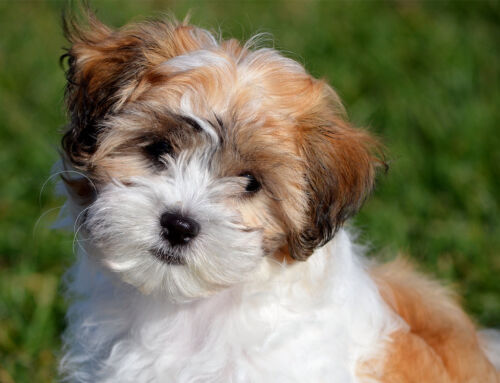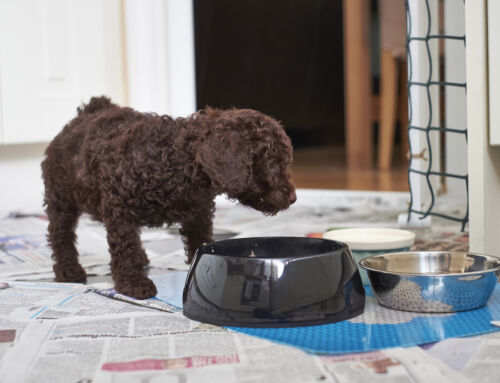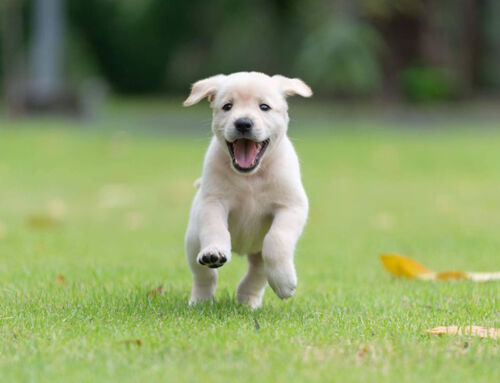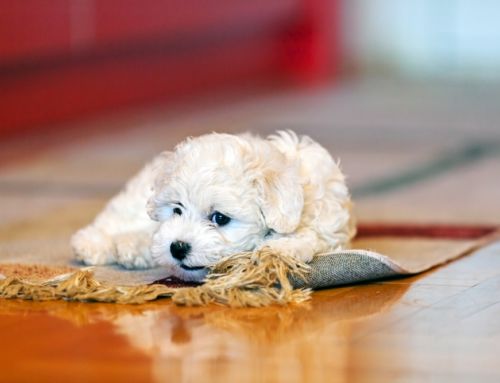 Getting a new puppy is an exciting time for pet parents. But if you already have a dog, you might wonder about the best way to bring the new arrival home. How will the older dog respond? Will it get jealous?
Getting a new puppy is an exciting time for pet parents. But if you already have a dog, you might wonder about the best way to bring the new arrival home. How will the older dog respond? Will it get jealous?
After all, while grown pets often welcome a little buddy, they still naturally protect their territory.
Bringing a New Puppy Home With Another Dog
But introducing a pup to an established dog doesn’t have to be stressful. With a small amount of planning, both pets can live happily and calmly together. These handy hints explain the best way of introducing your puppy to dogs you already own.
While some dogs take to a new and different sibling right away, others can struggle to adapt. This new source of competition for their owners’ love, affection, and food can cause even laid-back pooches to become distrustful. Allowing both dogs to meet at home without a proper introduction can result in jealousy. Additionally, the grown doggy is more than capable of hurting a young puppy.
The First Meeting
If you’re picking up the puppy in advance, ask the breeder for a piece of material that has the pup’s scent on it. Let your current pooch smell the item at home; this allows it to make an association with the new dog.

Neutral Ground
The first time the dogs meet should happen on neutral ground, such as a neighbor’s yard or a place your resident dog hasn’t marked. This way, the older pooch won’t become fearful, threatened, or protective of its land — in this case, your home or garden.
If a neutral territory isn’t available, use a place other dogs use often. The older pet will have fewer territory claims and be more willing to greet the second dog, and they can start getting used to each other. Have the adult dog on a leash while someone else it’s familiar with has the puppy (also on a lead). Next, gently let them meet and sniff each other. Remember not to hold them tight to your side; they’ll feel restricted.
Bonding Playtime
At this point, a great way to keep things relaxed is by taking them for a stroll together. A walk in a neutral area reduces tension and anxiety while establishing that all-important familiarity. Both dogs will be too distracted by the sights and scents of the world around them to become agitated.
This meet should be brief, with you calm and composed throughout. Dogs sense tension and are prone to be on guard and stressed if their owner is. The older pet will assess your emotions and look to you to figure out how to react.
Homeward Bound
Then, let them have playtime and walk into the house together. But before bringing your new addition home, be sure to:
- Make sure both dogs have had vaccinations
- Hide your current dog’s favorite toys
- Have separate rooms available so they can time out
- Use different food bowls to prevent possessive behavior
For the first week or two, monitor both dogs to establish if they’re happy with each other. Your attention and affection should be on the current pet at this stage. Focusing on the resident dog is reassuring for it and helps quell any brewing feelings of jealousy.

New Home
On the puppy’s first day home, give it extra time in its new crate to become accustomed to the environment. This also allows the existing dog to get used to the new arrival. Often, puppies want to jump all over older pets, so a little restriction via crating can calm things down when needed.
Another tip to help them get along is for each to have its own toys. If the new pup picks up the senior’s toys, a firm “No” is required before returning the toy to the elder dog. Don’t forget to spend time with just you and the senior to refresh your bond. Also, give the older dog a safe space where it’s allowed but the upstart isn’t (consider a baby gate if necessary). This will refresh the senior’s patience and help it accept the newbie.
Signs of Agitation
Of course, when home, your new puppy will want to play and generally muscle in on everything, even if the older animal is showing signs of agitation. But, because of its age, the pup won’t understand canine body language very well. The body language of the elder pet in the initial weeks is going to be crucial to give an insight into how it’s tolerating the young upstart and how they’re getting on.
Key dog behavior to be on the lookout for includes:
- Raised fur on the back of the neck
- Prolonged stares
- Growls and snarling
- Teeth displaying
It almost goes without saying, but these behaviors should cause you to keep an extra-watchful eye on the interaction. Everyone needs a break from time to time, and dogs are no different from puppies in this.
Natural Behavior
Don’t punish your older dog when it shows these signs (as long as they’re still in the warning phase). This “back off” behavior is natural, and reprimanding it for correcting the pup can lead to confusion — besides, the youngster has to learn. After all, puppies badly behave: They jump up without being invited and are liable to steal toys or food. The young dog has to learn how to behave and where boundaries lie.
The Old Routine
It’s a given that your first few weeks are going to involve sleepless nights, whining, and unplanned potty breaks. But settling back into the routine of the older pet is really important at this stage. Besides keeping the disruption to its life minimal, the best part of having an established dog around is that it’s already the best example to copy.
Once they trust each other, teaching the new family member crucial aspects of dog training like potty training and socialization is far easier.
The Best Teacher
The new puppy should be taken outside to practice potty training and allowed to watch and learn — likewise when learning social skills like meeting new friends and going places. This process is so much smoother when there’s an older pet at home, one that’s already learned through human instruction.
Like all animal behavior, it can seem like two steps forward, one step back at times, but the steps above should help get both doggies more comfortable with each other and help them become doggie best friends in no time.




